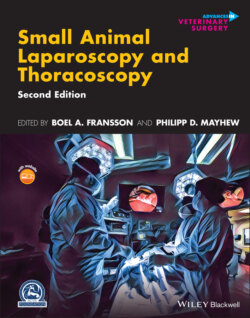Читать книгу Small Animal Laparoscopy and Thoracoscopy - Группа авторов - Страница 42
Opportunity to Practice
ОглавлениеCurrently, the opportunity for simulation training is severely limited for veterinary surgeons and residents. Hopefully, veterinary surgery will show a similar development to that occurring over the past decade among MD surgeons. In 2006, only 55% of residency programs had training laboratories [12], but by 2008, such laboratories became a requirement [9]. In 2019, approximately 36% of ACVS resident training programs had access to a simulator [15]. Unfortunately, as many as 48% of residents perceived that training was not encouraged by senior faculty [15]. Despite lacking support from senior faculty, 88% of ACVS residents thought that simulation training increases OR performance [15].
Ideally, all trainees should have easy access to simulation training at their practices. This preference is based on the fact that distributed practice leads to better skills acquisition and retention compared with intense extended practice [41, 46]. The optimal distribution is presently considered to be one‐hour sessions with a maximum of two sessions per day interspersed by a rest period, allowing the brain the opportunity to internalize the learning [47]. Approximately 10 hours of practice has been demonstrated to lead to fundamentals of laparoscopic surgery (FLS) competency [24]. Skill decay will ensue after rigorous training, but with ongoing practice in small amounts at six months intervals, performance has been shown to be maintained at a high level [47].
